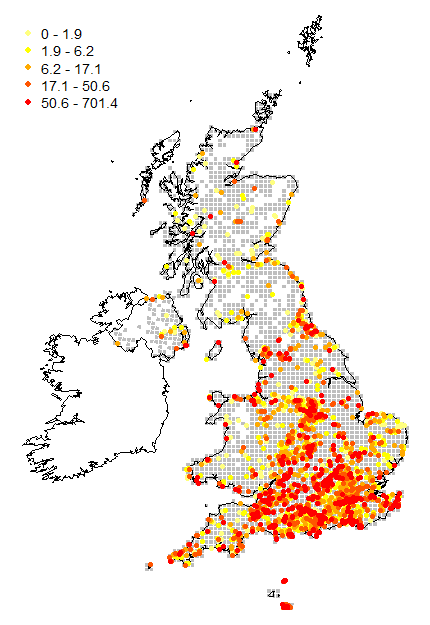Common Blue (Polyommatus icarus)

© - Nick Greatorex-Davies
The Common Blue is widespread in Britain but has much declined with the destruction of much semi-natural herb-rich grassland through agricultural intensification. It lives in discrete colonies on herb-rich grassland and disturbed sites where such legumes as Bird's-foot Trefoil (Lotus corniculatus) and Black Medick (Medicago lupulina) grow on which the caterpillars feed. (For further details on this species see http://www.butterfly-conservation.org/).
This chart shows the index of abundance (LCI = Log Collated Index) over time. It shows fluctuations in populations from year to year, and is scaled so that the average index over the whole series is equal to 2 (horizontal line). Further details on the analysis of UKBMS data can be found [here]
This chart shows the average number of butterflies seen on transects between April and October across all sites (fitted values from a Generalised Additive Model). The blue line gives average counts over the full BMS series (1976 to date) and the red line gives the average for the last year.

This map shows symbols for the mean abundance at transect sites, with the colour of the symbol reflecting the level of abundance. Means are over all years. Grey background squares are the occupied cells as shown by the Butterflies for the New Millenium over the previous ten year period.




